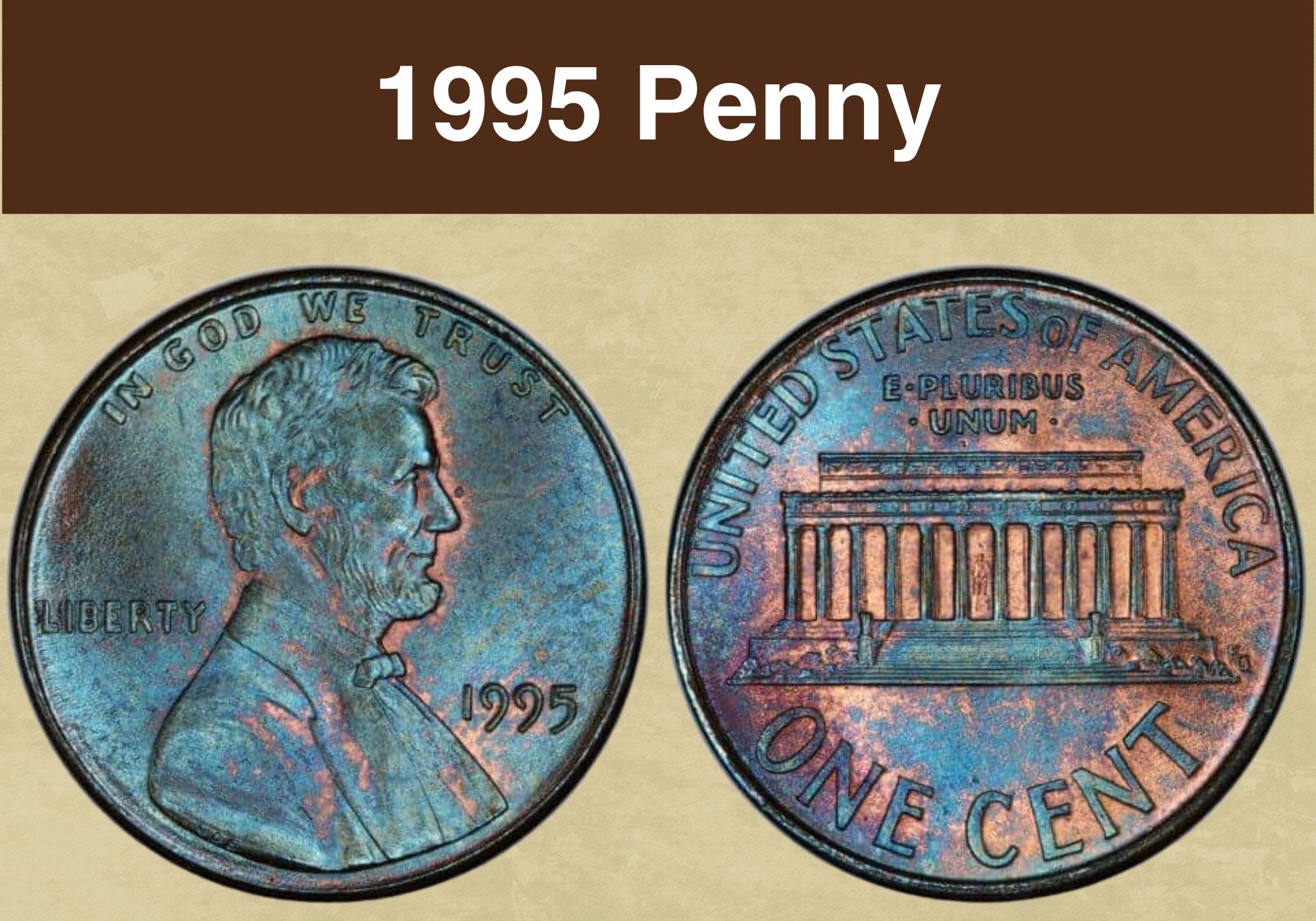
Coin Value Contents Table
The 1995 penny is a fairly recent coin. And as the lowest denomination in US currency, you might not expect it to be worth very much. But some special examples are highly collectible.
We’re going to learn more about the 1995 penny value and the factors that affect it. We’ll investigate its history and design. And we’ll look at some of the interesting Mint errors that can enhance its value.
Ready to find out more? Then let’s get started!
1995 Penny Value Chart* |
||||
| Mint mark | XF45 | MS60 | MS65 | MS68 |
| 1995 (P) No Mint Mark Penny Value | 1 cent | $1 | $10 | $135 |
| 1995 D Penny Value | 1 cent | $1 | $10 | $140 |
| PR60 | PR65 | PR68 | PR70 | |
| 1995 S Proof Value | $1 | $4 | $7 | $34 |
*Values are for coins graded red
History of the 1995 Penny
The 1995 penny is part of the series known as Lincoln pennies. They get their name from the image of President Abraham Lincoln which appears on their obverse.
The first pennies bearing his image were struck back in 1909. That year marked the centenary of Lincoln’s birth. And it was the first time the image of a real person had ever appeared on a US coin.
Before that, the idea had been considered improper, and closely linked to monarchy. But as the centenary year approached, public sentiment swung behind honoring Lincoln on the nation’s coinage.
Lincoln cents are still being produced today. And that makes the portrait of Lincoln the longest-running design on any US coin.
The reverse of the coin, however, has gone through many different versions. From 1909 to 1958, it showed two ears of durum wheat. That changed to the Lincoln Memorial in 1959, marking 150 years since Lincoln’s birth. It’s this design which appears on the 1995 penny.
In 2009, the bicentenary saw the Lincoln Memorial reverse replaced with four separate designs. These showed Lincoln at various stages in his life.
The bicentennial coins were produced for a single year, before being replaced with the design known as the Union Shield. It’s this image that is still used to this day.
For many years, the penny was made of bronze. But the rising price of copper meant that production became ever more expensive.
In 1991, the composition was changed to zinc with a copper cladding. This meant that coins still had their distinctive red or brown color, but were far cheaper to produce.
If you compare a 1995 penny with one minted before 1991, you’ll find it’s lighter. And if you bounce them both off a wooden surface, they’ll make a different sound. The 1995 penny sounds plasticky, while pre-1991 examples ping.
Also read: 12 Most Valuable Lincoln Penny Worth Money
Features of the 1995 Penny
The Obverse of the 1995 Penny
The obverse, or “heads” side of the 1995 penny is the side which depicts Abraham Lincoln. The portrait was the work of an artist named Victor David Brenner.
President Theodore Roosevelt appears to have had a hand in Brenner’s selection. The President had sat for Brenner for a medal for the Panama Canal Commission, and seems to have been impressed with his work.
Brenner was originally from a part of Russia that’s now in Lithuania. He came from a family of metalworkers, and emigrated to the USA in 1890.
His portrait of Lincoln is arguably his most famous work. He later wrote that he had imagined his subject as he would have looked if reading to a child. This, Brenner believed, would show the President at his liveliest.
The first Lincoln pennies had carried Brenner’s initials on the reverse. But production was halted when there was an outcry that they were too prominent and constituted “advertising”. They were removed altogether, over Brenner’s objections.
In 1918, they were reinstated on the obverse. You’ll find them there on the 1995 penny, tucked discreetly at the bottom of Lincoln’s shoulder.
Above the portrait are the words “IN GOD WE TRUST”. The word “LIBERTY” is to its left, while the date is to the right. If there is a mint mark, it will appear below the date – “D” for Denver or “S” for San Francisco.
The Reverse of the 1995 Penny
The reverse of the 1995 penny shows the Lincoln Memorial in Washington DC. The image was the work of the Mint engraver Frank Gasparro. His monogram appears to its right, next to the lower steps of the building.
Above the image arches the country name, running parallel to the upper coin edge. The Latin motto “E PLURIBUS UNUM” is below that. The words mean “From the many, one”, and refer to the creation of the USA as a union of states.
The denomination is in the largest font of all. It is written as “ONE CENT”, and curves parallel to the lower coin edge.
Other Features of the 1995 Penny
Both business strike and proof pennies were struck in 1995. The business strike coins were produced at the Mint facilities in Philadelphia and Denver, while proofs were produced in San Francisco.
Denver coins are marked with a “D” on the obverse, while San Francisco proofs have an “S”. Coins struck in Philadelphia don’t have a mint mark.
The copper cladding of 1995 pennies means that the colors of individual coins vary from red to brown. The coins are red when new. As they’re handled or exposed to oxygen in the air, the color gradually turns to brown.
The professional coin grading agencies will give each coin a color designation. All other things being equal, red coins are the most valuable. But to be classed as red, a coin must be that color over at least 95 per cent of its total surface area.
If it’s brown over the same proportion of the surface, it’s classed as brown. And if it’s somewhere in between, it’s red and brown.
This YouTube video from Len Here includes guidance on color grading Lincoln pennies.
Also read: 13 Most Valuable Wheat Penny Worth Money
1995 Penny Grading
| # | Grade |
|---|---|
| 1 | Basal State-1 |
| 2 | Fair |
| 3 | Very Fair |
| 4, 5, 6 | Good |
| 7, 8, 10 | Very Good |
| 12, 15 | Fine |
| 20, 30 | Very Fine |
| 40 | Extremely Fine |
| 50 | About Uncirculated |
| 60 | Mint State |
| 65 | Mint State |
| 70 | Mint State |
Please check our grading guides to know your coin scale, It’s the necessary step to know the exact value of your coin.
Check out now: How to Grade Lincoln Wheat Penny?
1995 Penny Value Guides
1995 No Mint Mark Penny Value
Some 6.4 billion pennies were struck in Philadelphia in 1995. And even though some of those have been lost over time, the number of survivors is still huge. The independent coin graders, the PCGS, estimate that over 2 billion survive at all grades.
That means that circulated coins – those graded below 60 on the coin grading scale – won’t usually be worth more than their face value.
Coins in the best condition are, by definition, most likely to be red in color. But even an uncirculated red 1995 Philadelphia penny won’t be worth more than a few dollars, except at the very highest grades.
At MS65, the lowest grade at which a coin is termed a “gem”, the value is around $10 dollars. But at MS67 and above, prices rise steeply.
While a coin graded MS66+ is worth only around $16, that rises to $52 at MS67. At M68, the value is around $135.
And the very finest example to have been certified to date is graded MS69. Only one coin is known to exist at this grade, and the PCGS values it at an impressive $7,850.
1995 D Penny Value
The Denver Mint facility was even more prolific in its production of 1995 pennies, producing more than 7 million. The number of survivors is thought to be similar to Philadelphia pennies, at around 2 billion.
For this reason, pennies in circulated condition won’t usually be worth more than a cent. And even in uncirculated grades, brown, and red and brown, coins are generally worth less than a dollar.
Red coins in mint state, however, are more valuable. A red 1995 D penny graded MS63 is worth around $6, rising to $10 for a gem quality MS65.
Availability drops sharply at MS68, and a coin at that level is worth around $140. Values rise steeply from there, to $950 at MS68+, and to $4,150 for the five coins graded MS69.
1995 S Proof Penny Value
The proof pennies struck in 1995 in San Francisco were aimed at the collecting market. They were struck on highly polished planchets using specially prepared dies. And as a result, they’re very attractive coins.
All 1995 S proofs are “deep cameos”. This is the term used for proofs that have a strong contrast between glossy fields (the flat parts of the coin) and frosting on the raised parts.
But despite this, values are lower than you might expect. That’s because these coins are still readily available at all grades – including perfect PR70 examples.
Almost 2.8 million 1995 S proof pennies were struck. And because they were always marketed as collectors’ pieces, the vast majority of those survive in excellent condition. That means it’s possible to pick up a great quality coin for a modest price.
At PR60, the value is just a dollar, and values remain in single figures all the way up to MS68+ ($8).
A proof graded PR69 is worth around $14. And a flawless PR70 proof penny is worth just $20 more. To date, over 1,100 coins have been certified at this top grade.
Also read: 17 Most Valuable Indian Head Penny Worth Money
Rare 1995 Penny Errors List
1995 (P) No Mint Mark Penny, Double Die Obverse
Double die errors occur during the process of creating the die that imprints the design onto the coins. In order to transfer every detail, the die itself has to be struck more than once by a hub. And if there’s any movement during that process, it creates double lines on the design.
This doubling is then transferred to the coins struck by the defective die.
If the error is on the obverse die, it’s a double die obverse (sometimes shortened to DDO). And if it’s on the other side, it’s a double die reverse (or DDR).
Some of the coins struck in 1995 have a double die obverse. And the doubling is clear enough to be seen with the naked eye – it’s at its most obvious on the words “IN GOD”.
The 1995 double die obverse is interesting for another reason too. It’s the last year it was possible for an error of this kind to be made on Philadelphia coins. In 1996, the facility moved to a “single hub” technique, which eliminated multiple hub strikes.
The value of coins with this error depends on their condition and color. A brown coin graded AU50 is worth just a couple of dollars, rising to $40 at MS67. For red and brown coins, the range is from $5 at MS60 to $100 at MS68.
And red error coins range from $12 at MS60 to a whopping $5,000 at MS69.
1995 (P) No Mint Mark Penny, Broadstruck
Coins should be held securely by a collar as they’re struck – but that doesn’t always happen. If the collar isn’t properly positioned, the metal can escape beyond the usual circumference of the coin. If that happens, the resulting coin is known as “broadstruck”.
One of the pennies struck in Philadelphia in 1995 had exactly that error. It was in good condition, graded MS62 red by the coin graders ANACS. But because this isn’t the rarest type of Mint error, it didn’t add an enormous premium to the coin value.
When this penny was presented at auction, it sold for around $25.
You can see examples of a range of different errors amongst 1995 pennies, as well as other denominations, in this YouTube video from Couch Collectibles.
Also read: 11 Most Valuable Wheat Penny Errors
Where to Sell Your 1995 penny ?
Now that you know the value of your coins, do you know where to sell those coins online easily? Don’t worry, I’ve compiled a list of these sites, including their introduction, pros, and cons.
Check out now: Best Places To Sell Coins Online (Pros & Cons)
FAQs
How much is a 1995 penny worth?
Most 1995 pennies are worth only a cent. But if they’re in excellent condition, or they have an interesting Mint error, they can be worth far more.
The finest quality Philadelphia 1995 penny is graded MS69 and is red in color. And that one is worth over $7,000.
Why is the 1995 penny worth $5,000?
Most 1995 pennies aren’t worth $5,000. But some coins in excellent condition can reach those kinds of values.
We’ve already seen that the very finest 1995 penny struck in Philadelphia is worth over $7,000. But, to date, only one coin has been found at that grade.
Another 1995 no mint mark penny that can be very valuable is one that has a double die obverse. Look for double lines on the letters of “IN GOD WE TRUST”. It’s most obvious on the first two words.
All 1995 pennies with double die obverses have a value to collectors. But some can be worth just a couple of dollars.
If they’re in the very finest condition, though, they’re worth big money. The top grade to have come to light so far is a near-perfect MS69. No fewer than 21 coins have been certified by the PCGS at that level. And they’re valued at $5,000 apiece.

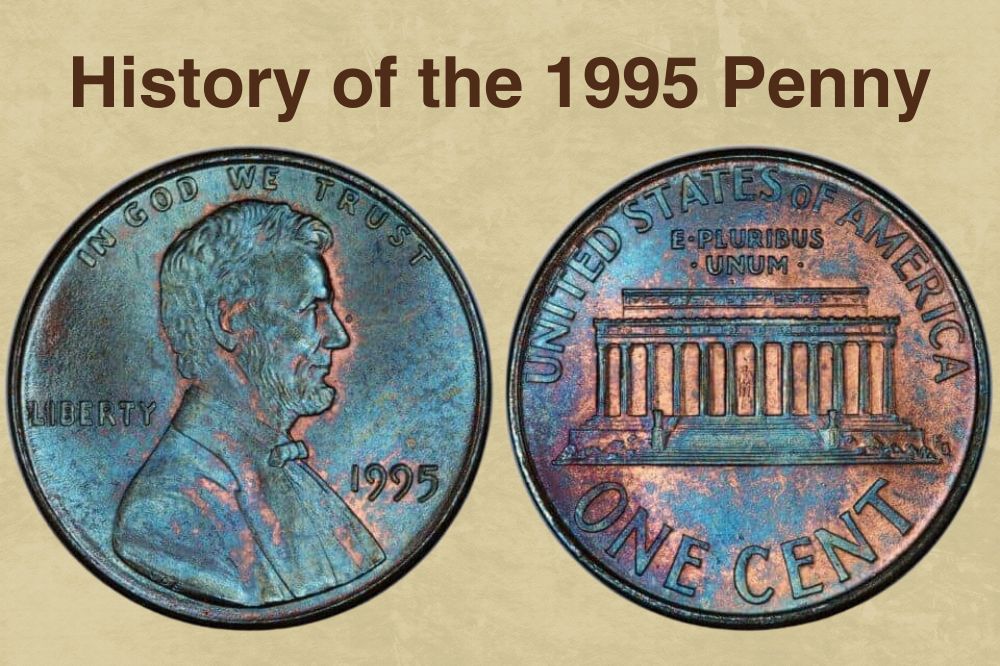
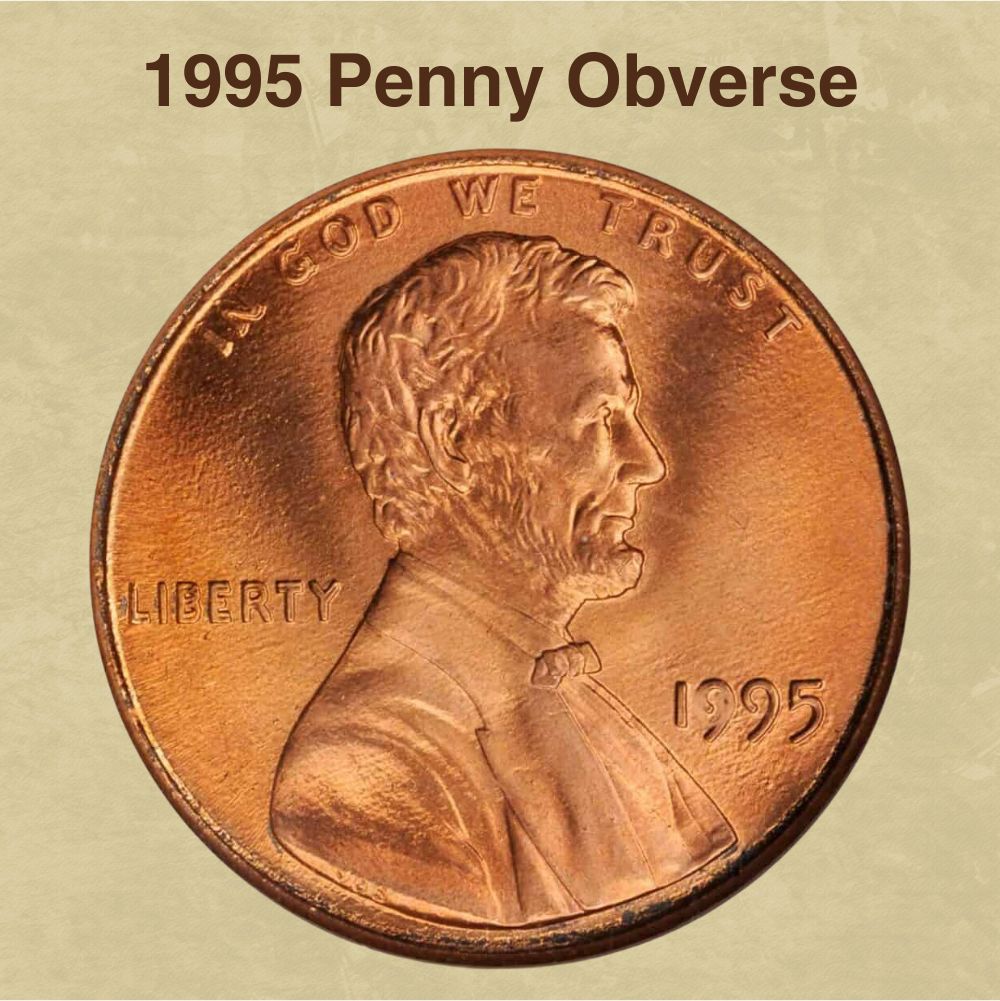
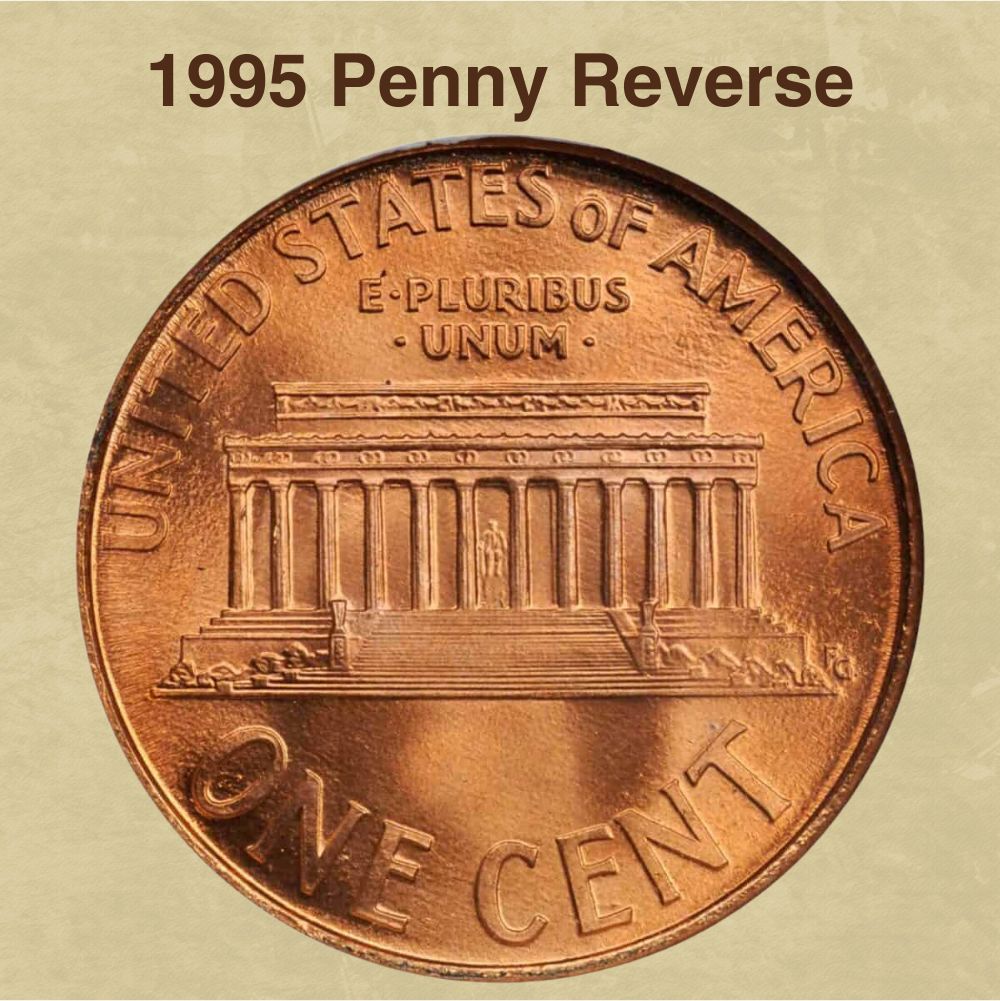
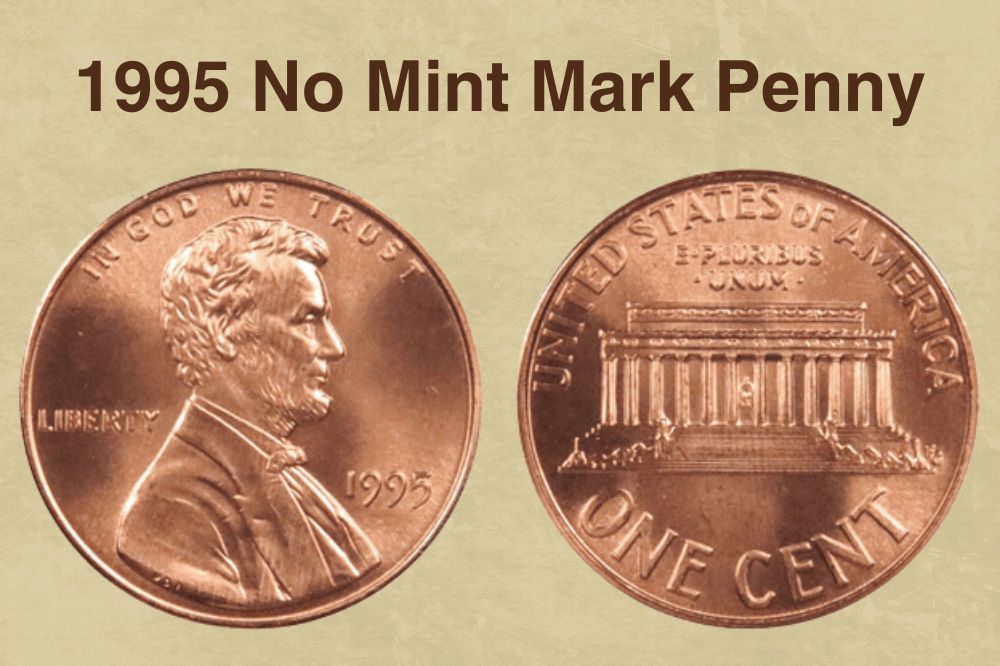
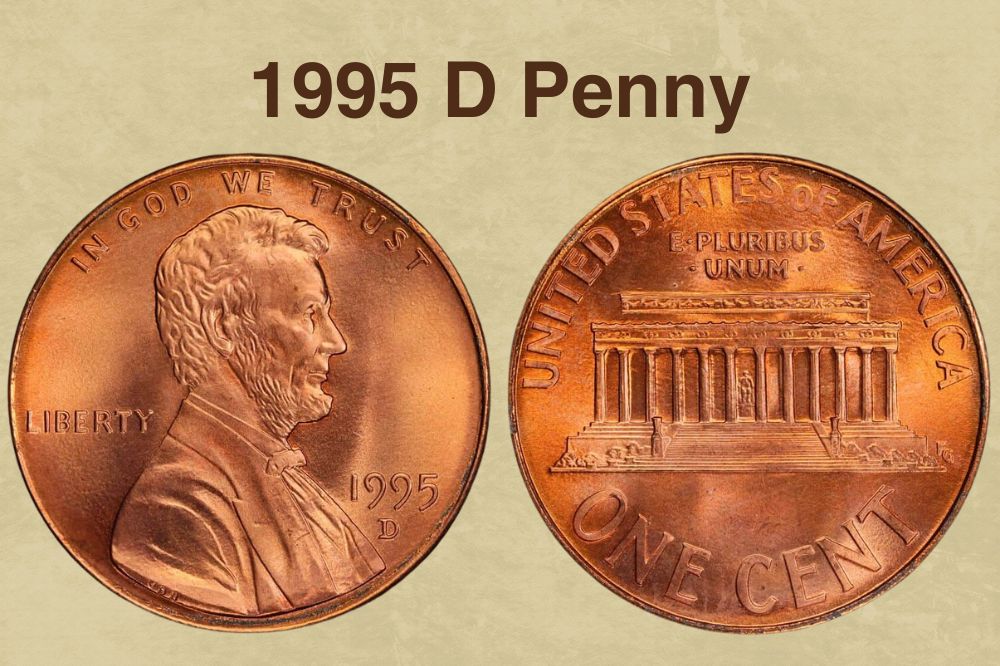
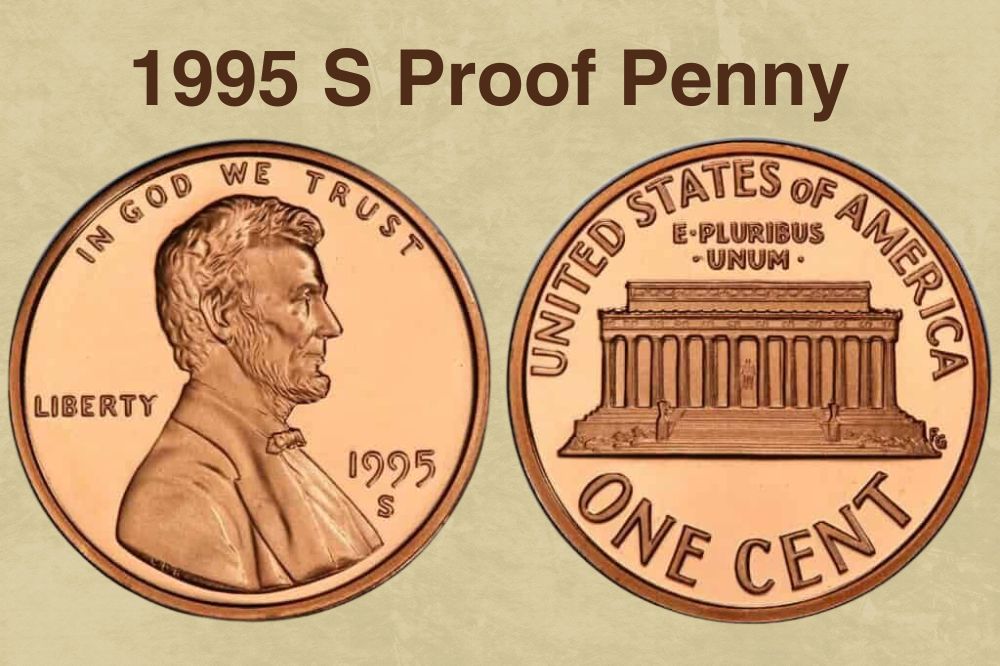
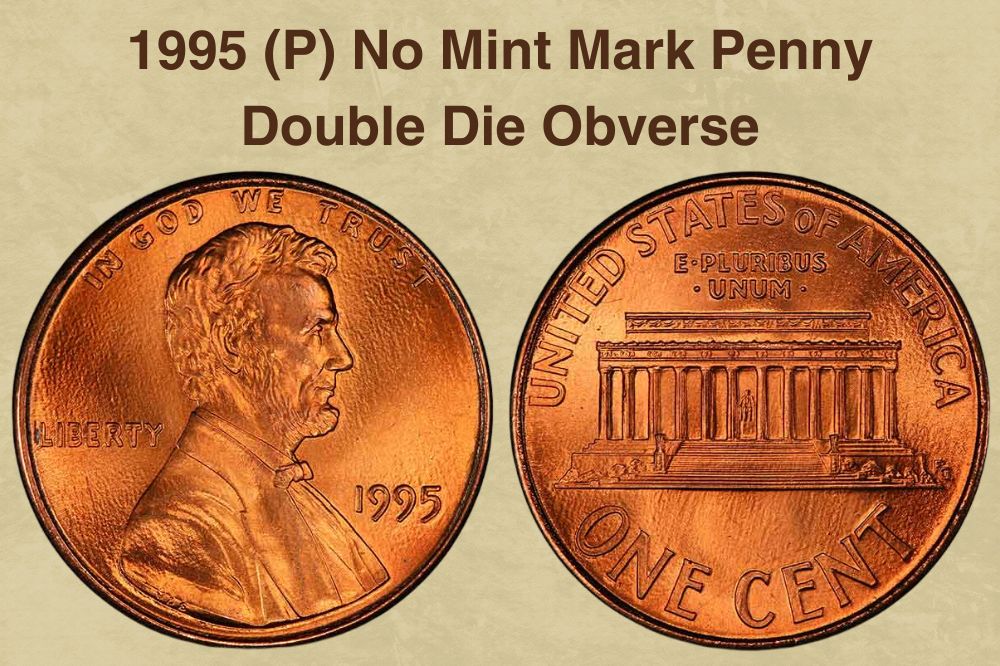
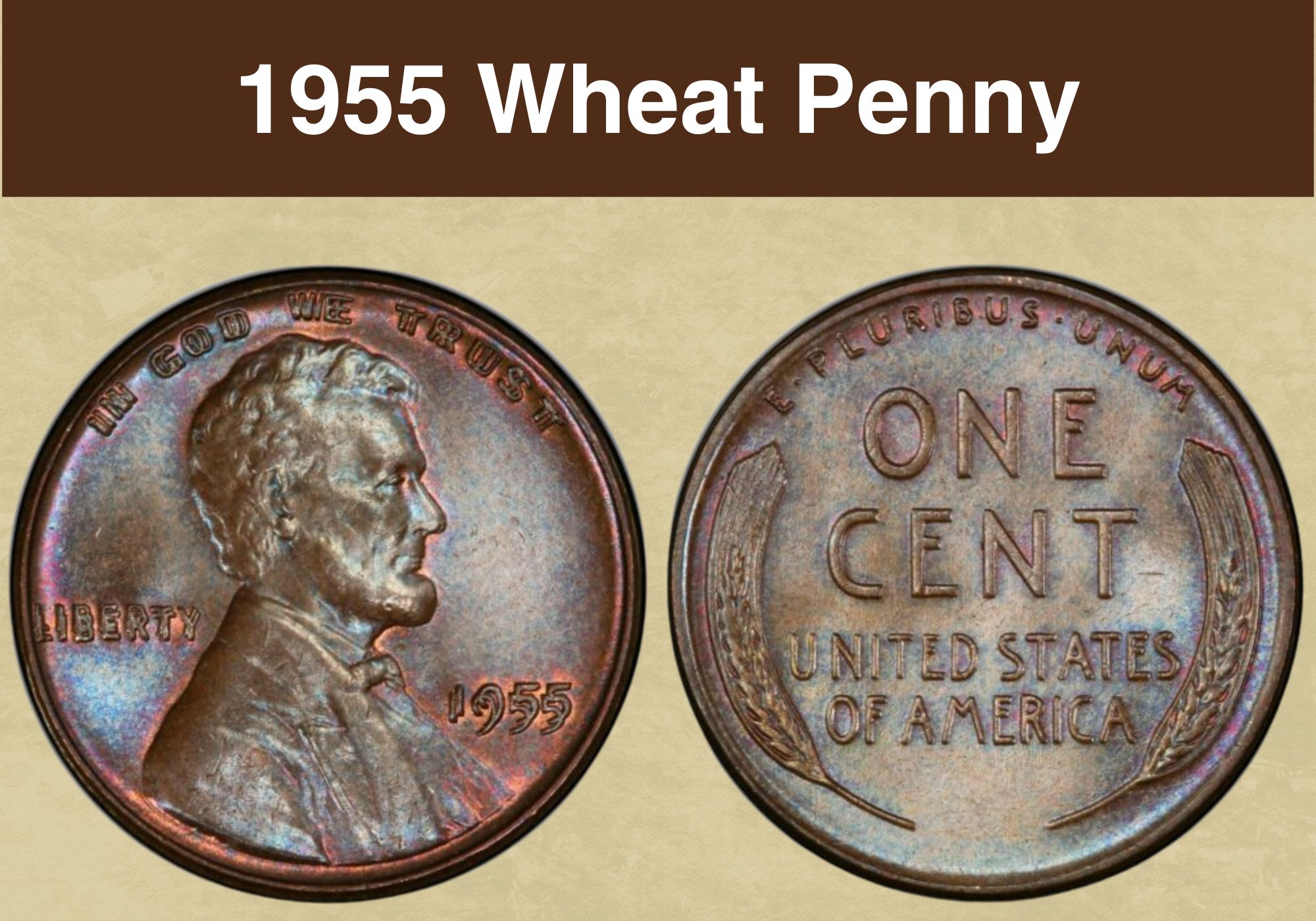
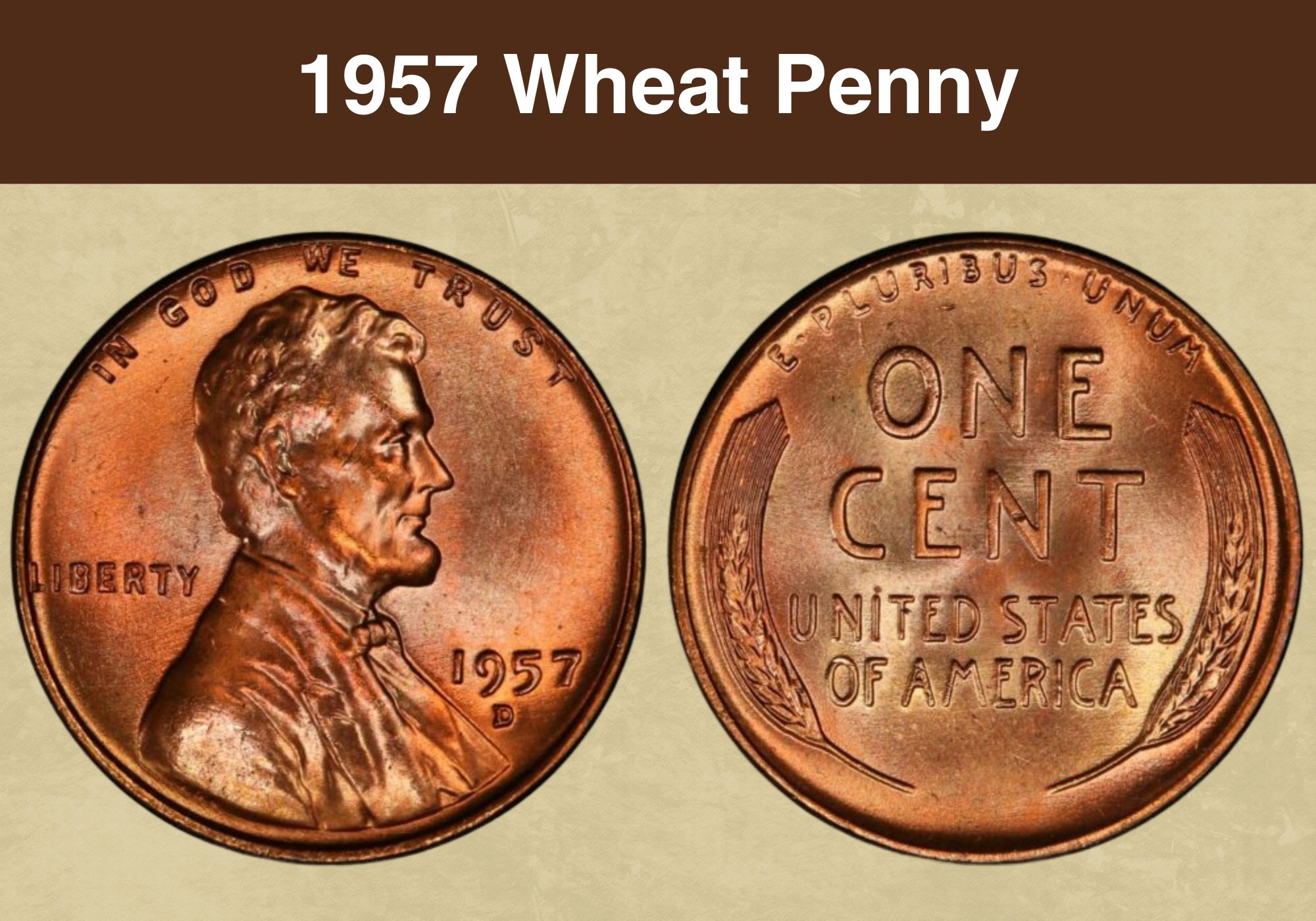
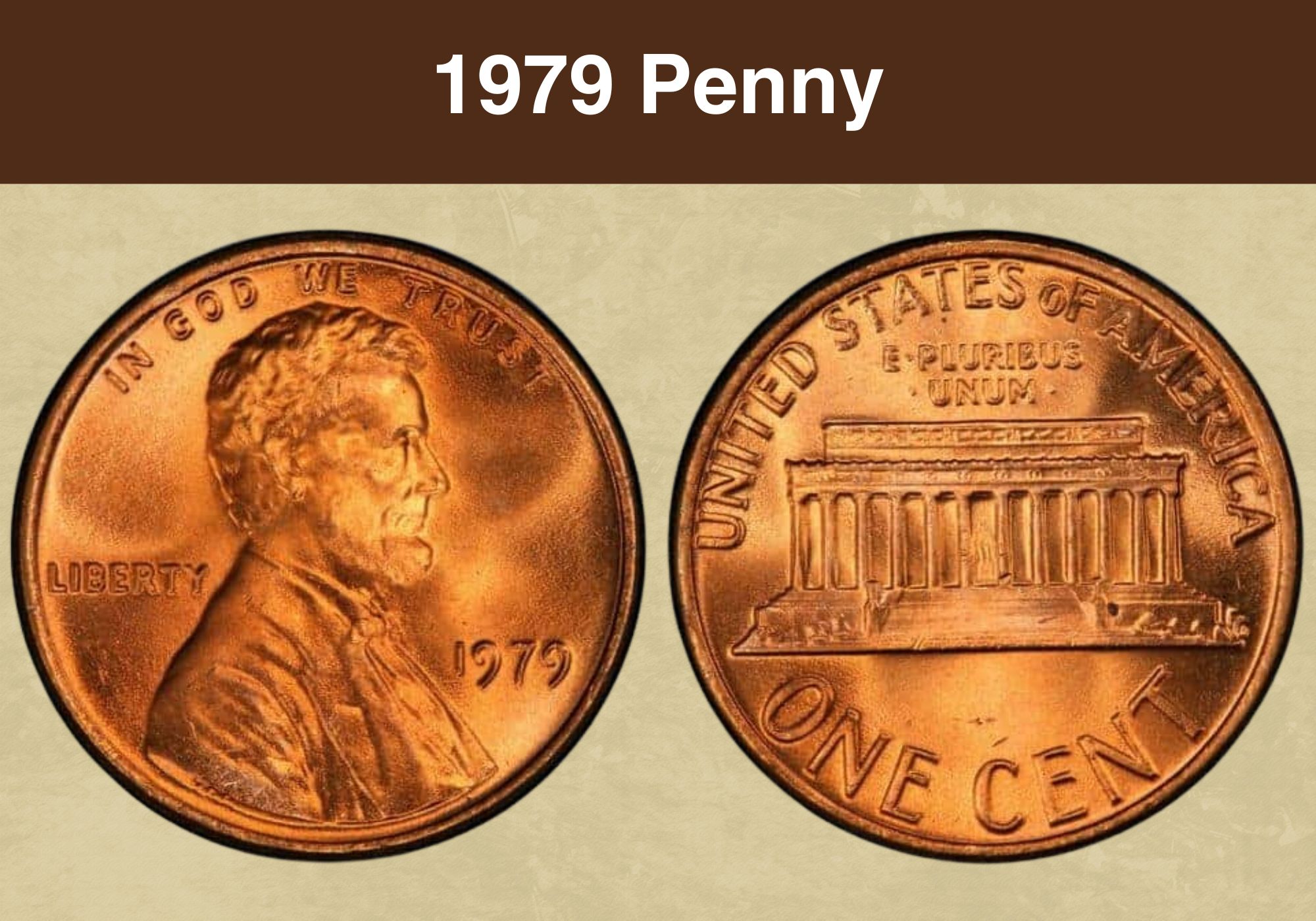
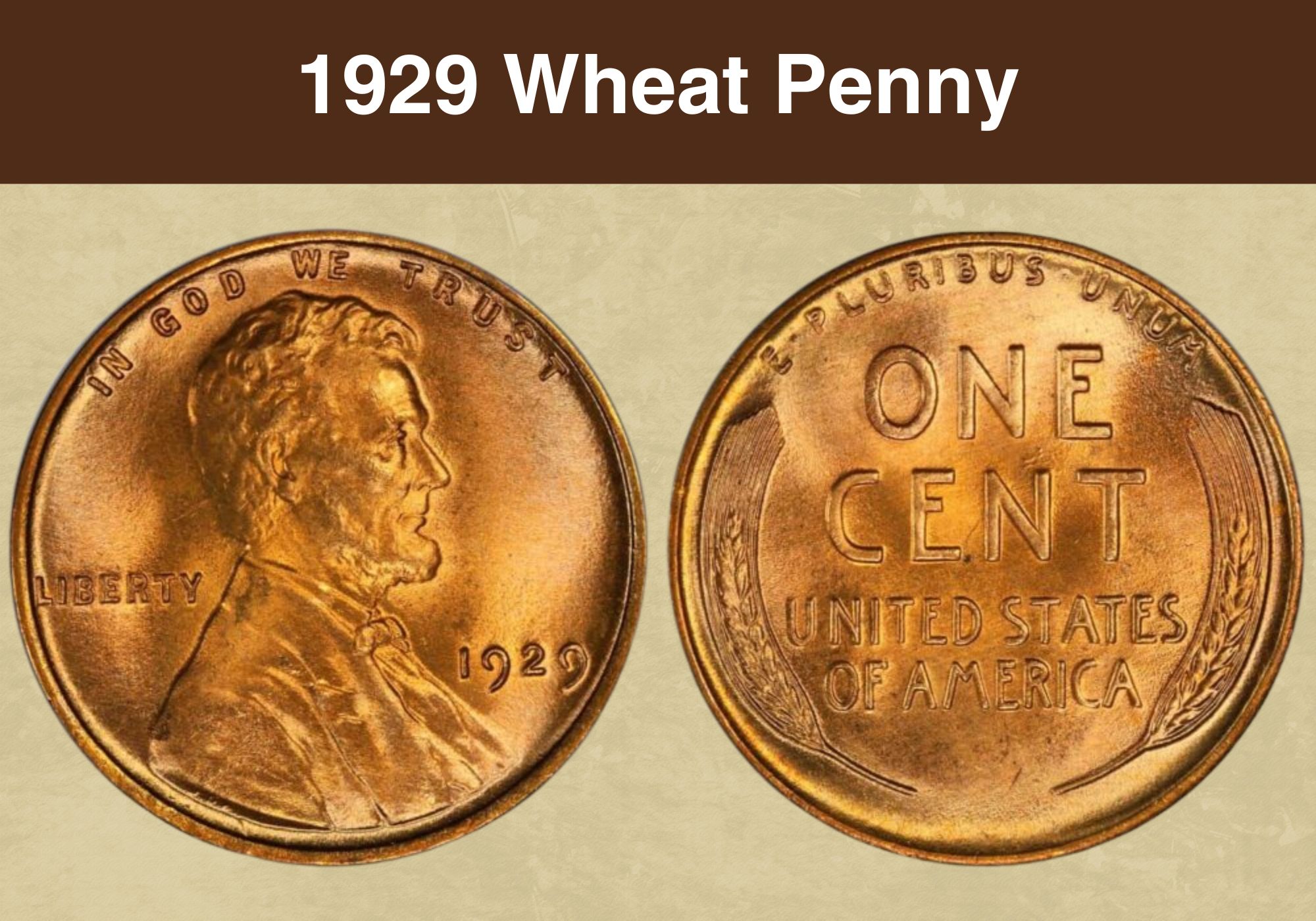
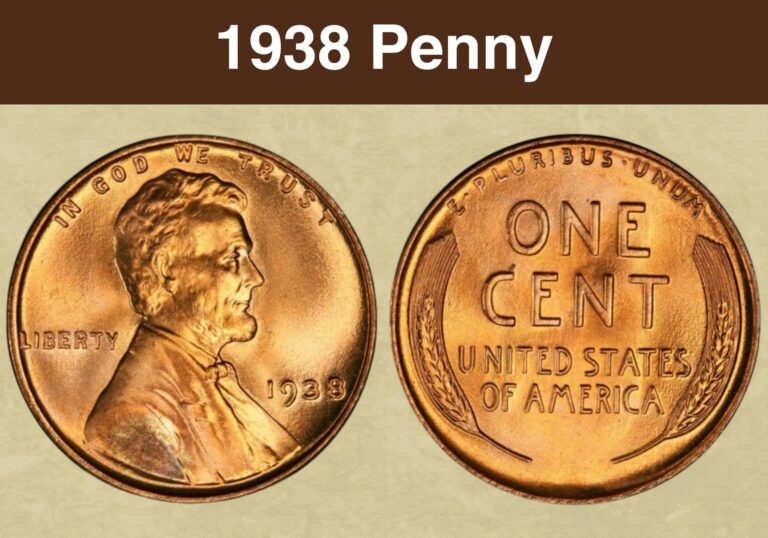
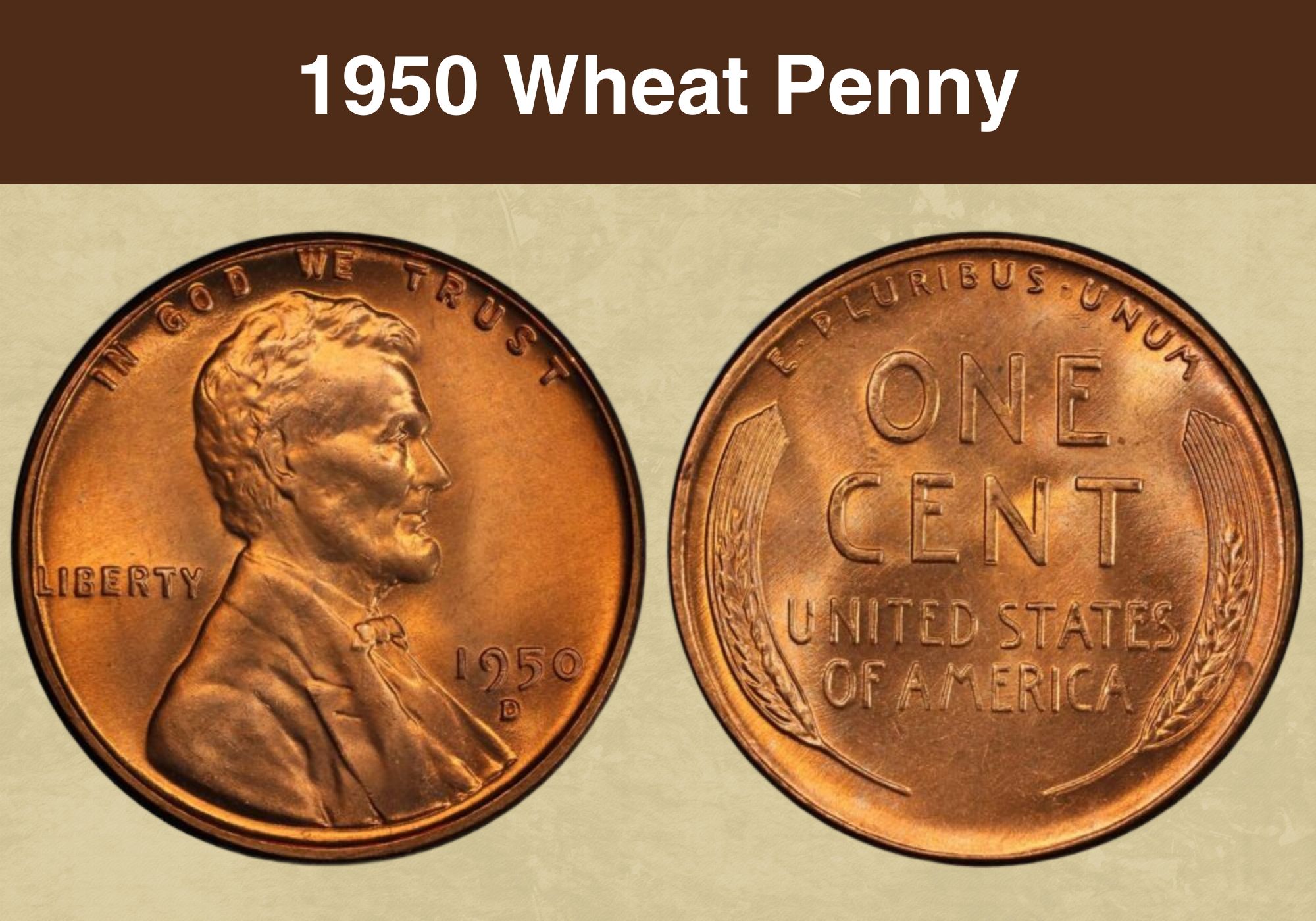
Thank you so much for your service of the informative articles. I enjoyed reading the 1’s of coins I have and learning how to identify others that I also have but didn’t know ”what” I had. 🙂
I have a 1995 d like the one in picture it’s in pristine almost perfect condition or perfect it’s also extremely thick. Question is what shall I do Online appraisal or in person? I also have 4 wheat pennies 2 2021 Peace dollars some 1964 Kennedy half’s 1982 d penny with tons of weird errors and a lot more coins they’re apparently seem to be worth more than I thought and have only been collecting them because I was looking for a way to save change as a hobby instead of always shopping. Thank you kindly for your help
I have a 1957 no mint mark wheat penny with the letter (L) on Lincoln’s face!!! Can you tell me if it’s worth anything your response will be highly appreciated you can contact me through my Gmail
I have a 1995 D with what looks like a piece of silver molded into lincolns head. Any info on this?